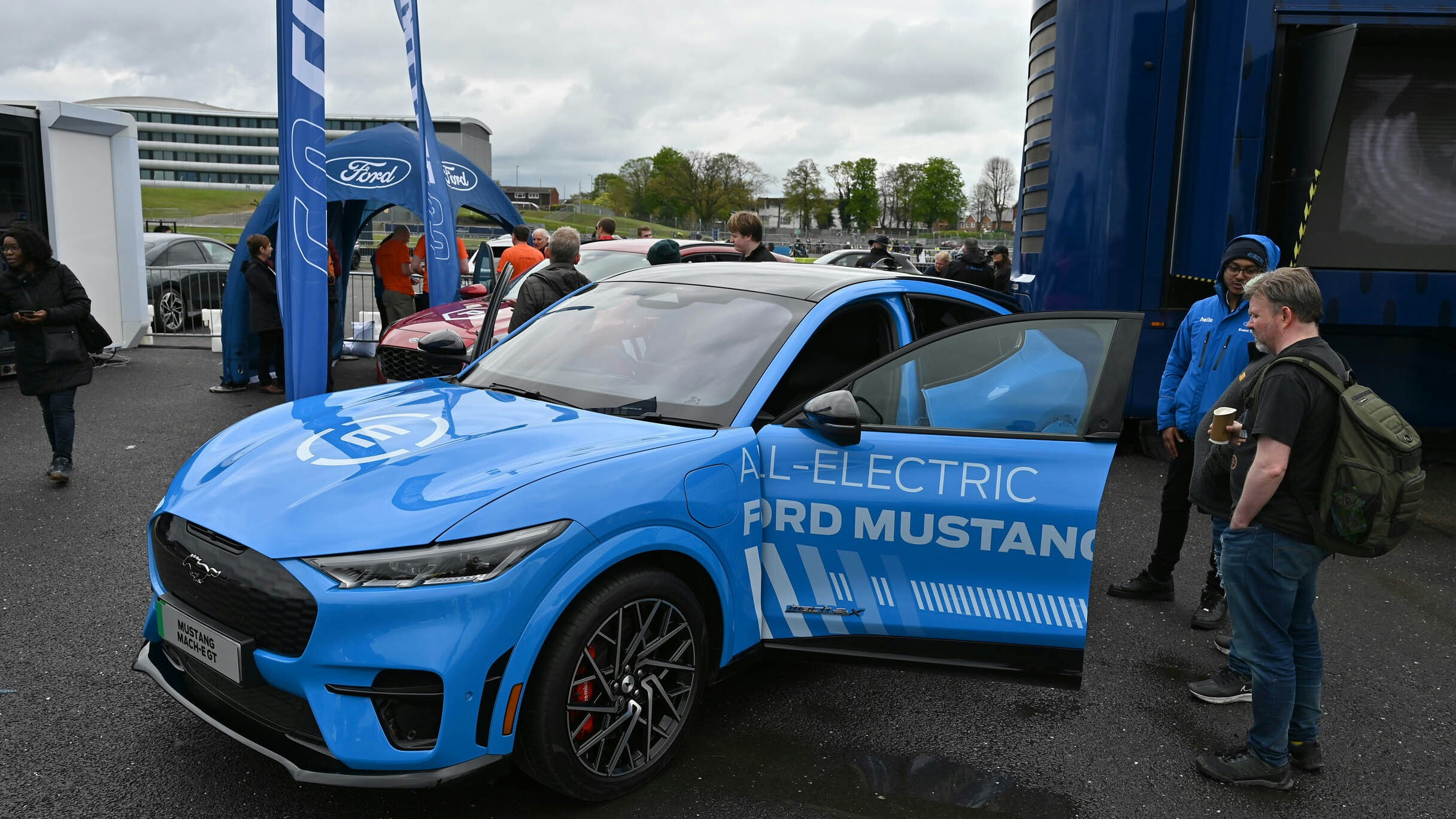Aiming to reduce carbon dioxide emissions in the transportation sector, the federal government is pouring subsidies into electric vehicles (EV) and several states have committed to eliminating sales of gas-powered cars.
Mark P. Mills, a physicist with the Manhattan Institute, said the emission reductions that EVs offer are far from certain.
“These are not zero-emission vehicles. They’re elsewhere emission vehicles,” Mills told Cowboy State Daily. “It’s not just the power plant that charges them. It’s the power plants that make the materials.”
Determining how much emissions are involved in manufacturing an EV involves a lot of unknowns, but Mills said typically the calculations of emissions savings are done with averages, which don’t provide sensible estimates.
Tons Of Rock
Writing in City Journal, Mills explained that to match the energy stored in 1 pound of oil requires 15 pounds of lithium battery. To make that battery, 7,000 pounds of rock and dirt have to be mined to get at the minerals that are needed — lithium, graphite, copper, aluminum and zinc, among others.
Globally, the mining sector uses 40% of all industrial energy, which comes from oil, gas and coal. Production of copper, nickel and aluminum require three to 10 times more energy per pound than steel.
The problem in calculating the emissions from the production of those minerals is that it varies widely from where they’re sourced. A change in source can double or triple emissions, depending on processing methods, a facility’s age and its location.
For example, refineries in China, which produce 50% to 80% of the global supply of minerals used in EVs, have emissions levels 1.5 times greater than those in the United States and Europe.
These emissions will also rise from what Mills calls “geological realities.” As demand surges for the minerals, areas with poorer ore grades will have to be tapped, and that means more earth has to be dug up and processed to get the same amount of minerals.
Chile, for example, is the world’s top supplier of copper. Over the past decade, the amount of energy its mining sector uses has grown 10 times more than the tonnage produced.
Charging Emissions
Gas-powered cars are mostly steel and iron, which produces a minor part of the vehicle’s lifetime emissions. The bulk of them come from burning gasoline and diesel.
This, of course, is where the electric vehicle shines. There are no tailpipe emissions from an EV. However, the electricity to charge the battery has to come from somewhere, and so how much emissions associated with charging the vehicle varies from state to state.
“If you drive in the state of Washington, it's probably a 60% reduction,” Mills said.
Washington has a lot of hydroelectric power, so it has a lot of low-carbon electricity.
Battery Size Matters
Volkswagen and Volvo published studies that calculate the emissions from producing EVs and the emissions from the electricity on Europe's grid.
They concluded that an EV has to be driven at least 50,000 miles before it produces less emissions than a gas-powered car. At 120,000 miles, the total emissions reductions are between 15% and 25%.
The EVs used in the study use small- and medium-sized batteries. If an EV uses larger batteries, those savings disappear.
“If you drive the kind of electric vehicle most people like to drive in Wyoming, large vehicles like the F-150 Lightning, and you charge at night, then you’re emitting more CO2 than just driving a diesel or gasoline F-150,” Mills said.
Since wind power drops considerably at night, most nighttime electricity generation in Wyoming is from coal.
Unknown Reductions
In calculating emissions savings from electric vehicle subsidies and mandates, Mills said averages are used, which don’t factor in all this wide variability.
“The government is implementing these mandates on the assumption of something that they have no way of knowing,” Mills said.
He said it’s hard to calculate the emissions reductions from EV adoption with any certainty, but it is possible to make more sensible estimates.
Mills said the City Journal article is a prequel to a Manhattan Institute study coming out this year that will provide a much deeper dive into all the calculations that go into determining just how much emissions savings will come from government mandates and EV adoption.
Most critics of these points, Mills said, would argue that the grid will be supplied with more wind farms, which will reduce the emissions from charging EVs. He said, however, that’s not what’s charging EVs today, and it will be a long time before that’s the case.
“And if the wind isn't blowing, am I allowed to charge my vehicle? Or do I have to wait for the winds to blow?” he added.
Layoff The Mandates
Aaron Turpen, a Cowboy State Daily automotive writer and supporter of electric vehicles, said there’s more to consider when it comes to EVs than reducing carbon dioxide emissions.
There are many other pollutants coming off of cars, and he said. At a power plant, these can be captured so they don’t get into the air.
“It's a whole lot easier to deal with it at that one location than it is at thousands of locations,” Turpen said.
Like many Wyomingites, despite these benefits, Turpen said he doesn’t agree with the government EV mandates.
“I don’t like being told I had to wear a mask, and I don’t like being told I have to own this or that,” he said.
Turpen said that, without mandates and subsidies, he believes EV adoption would happen over a much longer period through consumer choice, and that process would produce better EVs.
“We will have solutions for all of those things, but it's gonna take time and it's not gonna happen in 10 years,” Turpen said.
Kevin Killough can be reached at: Kevin@CowboyStateDaily.com





